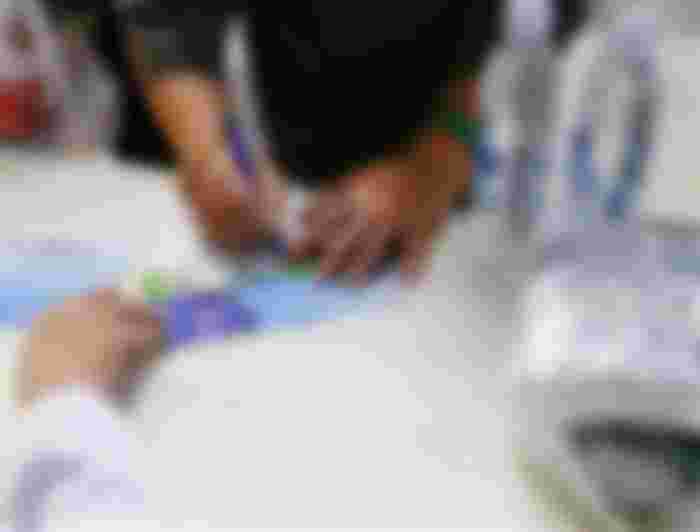
The US is spending more than twofold the measure of the normal medical care cost of 33 OECD nations around the world. Around $3.4 trillion was spent on medical care in 2017. However we can't guarantee the expenditures are adequate, as there are as yet a huge number of individuals who are living without protection inclusion and appropriate medical care. The US medical services industry is dynamic and changing at a fast movement.
To flourish and develop, each medical services partner ought to have the option to set the course of the medical care framework according to their necessities. Understanding and breaking down medical care insights gets basic. OSP blossoms with assisting medical care partners with keen medical services measurements and bits of knowledge.
Here are 50 Insane Statistics Every Healthcare Stakeholder Must Know:
1. The normal spending to handle 30 billion medical care exchanges remains at $250 billion every year because of helpless correspondence innovation.
2. There is over half reference spillage in a normal medical services framework.
3. Over 60% of alluding doctors discover the reference cycle wasteful due to miscounted courses of events and lacking substance.
4. Over 80% of mistakes in the medical care framework are authoritative innature.
5. A normal of 3 out of 10 tests directed are revamped because of the absence of basic data.
6. 30% of patient visits are unknown.
7. Medical services suppliers round out a normal of 20,000 structures yearly.
8. Paper record filings include a spend of $20 per documenting measure.
9. Over 80% of basic clinical mistakes are ascribed to miscommunication during care advances.
10. The US medical care frameworks spend over $150 billion yearly on missed arrangements.
11. 33% of patients report that data from the first guardian didn't arrive at the expert as expected for their arrangement.
12. Mistakes in hands-off between suppliers add up to 20% of negligence claims.
13. Repayments add up to around $364 million of complete misfortune for medical services offices.
14. Readmission rates, in the year passed by, for Medicare patients remained at practically 20% a year ago.
15. Emergency clinics in the US spend nearly $150 billion consistently on reference spillage.
16. Not exactly 50% of faxed references bring about fixed arrangements.
17. A fourth of US medical care supplier spending is managerial innature.
18. Providing care mistakes identified with medicine cause more than 7000 passings every year.
19. 90% of medical care suppliers are utilizing cloud-based administrations.
20. Around 17,000 patient records are penetrated every day.
21. Over 80% of patients consider their clinical records safe from unapproved seeing with medical care organizations that are utilizing something like date clinical items.
22. Over half of patients are worried about their clinical data when traded electronically.
23. In 2018, 5% of patients needed to re-try a test or method because of missing data.
24. In 2018, 5% of patients needed to top off their clinical history because of missing data.
25. 14% of patients, in the previous year, guaranteed they needed to hang tight for results past a sensible time.
26. OTC prescriptions give $102 billion to the US medical services framework every year.
27. Starting at 2017, a normal of 15% of Americans was covered under Medicare.
28. The quantity of Americans selecting private medical care plans has significantly increased since 2004.
29. Practically 10% of US residents, in 2017, had no clinical protection.
30. Man-made intelligence calculations and profound learning wereable to analyze bosom malignant growth at a higher rate than 11 pathologists.
31. Man-made intelligence machines can figure out how to distinguish andpredict hurtful microscopic organisms in the blood with 95% precision.
32. Around $2.6 billion are spent on each medication to experience clinical preliminaries, and only 10% of these medications make it to showcase.
33. Artificial intelligence driven innovation can look over 10-20 million mixes every day, conveying results multiple times quicker than customary drug organizations.
34. One such AI innovation can examine just about 70 billion fluctuated cell mixes and give criticism.
35. As per a recent report, 35,000 doctor surveys uncovered that over 95% of patient grumblings depended on helpless client support, mistaken desk work, and negative managerial encounters.
36. John Hopkins Hospital, through AI execution, a 60% improvement in its capacity to concede patients and a 21% expansion in tolerant releases before early afternoon, bringing about a quicker, more sure patient experience.
37. 63% of particular medical care offices, for example, radiology and pathology, are accepting an incentive through AI and ML conveyance.
38. 61% of patients concur that AI/ML innovation has expanded the worth ofcaregiving.
39. 44% of medical services offices concur that AI/ML is conveying expanded an incentive at the bedside or purpose of care.
40. In a recent report, 61% of respondents demonstrated that AI-driven advancements are offering phenomenal benefit in telehealth and far off patient checking.
41. 77% of medical care offices that convey AI-driven innovations demonstrated help towards clinical dynamic cycles.
42. Another 66% showed that they utilized the advancements to pick up bits of knowledge from informational indexes.
43. A similar report demonstrates that the greater part of the medical care organizations that sent AI-driven advances are utilizing them for populace wellbeing programs.
44. Another 40% are utilizing these innovations toward exactness medication improvement.
45. Fruitful and important utilization of AI-driven medical care items is extended to bring about yearly reserve funds of $150 billion for the US medical services industry.
46. The medical services items market is focused to increase ten times inside the following four years.
47. AI answers for clinical imaging has seen a fast expansion in 2018 and 2019.
48. Compelling use of AI to clinical dose mistake decrease can resultin an investment funds of $16 billion for the medical services industry by 2026.
49. As per a 2019 report, the worldwide man-made consciousness (AI) in the medical care market was around USD 1.4 billion of every 2018 and is relied upon to reach roughly USD 17.8 billion by 2025, at a CAGR of 43.8% somewhere in the range of 2019 and 2025.
50. The US is probably going to lead this provincial market, as it is the corporate central command of a few market players.
End: The measurements make completely certain that each medical care organization ought to be think about a healthy medical services procedure. US medical services framework is quickly progressing however is it comprehensive? When we brag about our exploration on oncology and worth driven medical care administrations, would we say we are ready to give medical care to the remotest piece of the US? We have to chip away at our fundamentals, computerize the manual medical care measures and be sympathetic in our motivation. Computer based intelligence can demonstrate an extraordinary main thrust in our motivation to change the medical services in not so distant future. .
